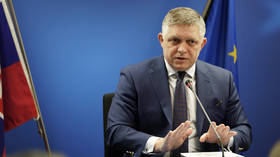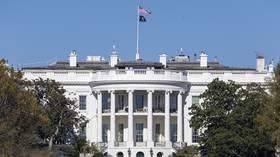Lone wolves of London: 'ISIS-inspired attacks present challenge for anti-terrorist police'
Some individuals, including those with mental health issues, are heeding the call of Islamic State (IS, formerly ISIS/ISIL) to carry out acts of terrorism. The UK has introduced 24-hour police units to deter acts of violence. RT has talked with a group of experts.
Following the news UK counter-terrorism cops are going on round-the-clock standby over fears of a terrorist attacks in Britain, a US citizen was killed on Wednesday night in a knife attack in Russell Square, London. Five other people were injured in the attack, but none of the injuries were life threatening, the Metropolitan Police confirmed.
The attacker was reportedly a young Norwegian man of Somali origin.
RT asked experts for their views on whether the anti-terrorist police initiative will be able to prevent attacks similar to the one in Nice in July, especially with the rise of difficult to predict lone wolf attacks.
AC Rowley: The suspect is a Norwegian national of Somali ancestry. No evidence of radicalisation or that the man was motivated by terrorism.
— Metropolitan Police (@metpoliceuk) August 4, 2016
RT: The new face of London's anti-terror patrol force looks menacing - but it was unable to prevent the attack. Are they helpless to attacks like these?
Dr Simon Mabon, Lecturer in International Relations, Lancaster University: Well, I guess they can’t be everywhere all at once. And where they aren’t there’s always scope for someone or some group of people to conduct an attack. And I guess that’s part of the concern… This operation is taking place to try and deter people; you don’t know where there are going to be, you don’t know their routes and given their heavily armed status, given how they look, it’s a very imposing look, you don’t want to cross their path if you’re wanting to do something like this. It’s a bit of a deterrent; you don’t know where they’re going to be, or when. And that in of itself is the deterrent.
RT: Scotland Yard has told Londoners to run as far away as possible and hide in case of a terror attack. What do you make of that advice?
SM: Well, I sort of despaired when I heard that… All this statement did was to create additional fear. People know that London is such a high-profile city; they know the UK is involved in targeting Daesh (ISIS/formerly ISIL) and with the experience of 7/7 there is the possibility of this happening on our shores. But for someone so high-ranking to come out and say that, it was probably a bit of a mistake and added to the climate of fear we are living in.
Annie Machon, former MI5 agent, intelligence expert
RT: The Metropolitan police have taken the word 'terrorism' from their recent statement on the stabbing. Is this an indication where the investigation might be going?
Annie Machon: I think the distinction between mental health issues and terrorism is a false dichotomy. There is obviously a blur between the two categories. Somebody can be mentally unstable, but can heed from a distance encouragement from some sort of terrorist group to carry out a lone wolf attack. So I think it’s wrong for them to say it’s an either/or.
Often I think there is a blending of both as we’ve seen in many other attacks, not only in Europe, but also last year in London when there was a stabbing attack in a Tube station. And that was initially called a terrorist attack, and in the trial the accused turned out to have had mental health problems. So it’s interesting that initially everybody assumes that it’s terrorism, now there are sort of rolling it back a bit. However, that doesn’t mean it isn’t terrorism. They just need to dig a little bit more.
Dr Binoy Kampmark, an expert on Urban and Social Studies from the RMIT University in Melbourne
RT: Many are warning of more terrorist attacks in Europe in the near future. Is this the new reality for Europe?
Dr Binoy Kampmark: Well, possibly we’re going to see more of it. But what I would like to suggest is to think about what has happened before. I think we have to be careful about this phenomenon called ‘availability bias’ in our age of social media, the instantaneous reactions on Twitter – did the person suffer mental health issues, was the person a terrorist, was it a combination? We have to be mindful of the fact that the saturation point is reached very quickly in terms of an image featuring an attack, provided that people have their cameras… and spread the image like a virus. The reality is that European cities especially have been used to a history of terrorist, shall we say, emergencies. The ring of steel in London during the ‘time of the troubles’ when the IRA were operating is an example. The same thing with ETA in Spain… So we have to be mindful that these sorts of things have happened before and we should not get carried away with assumptions that this is something radically new in what is happening.
So, knife attack in London and Sky News are talking about Donald Trump. I haven't even bothered with the BBC..#LondonAttack#RussellSquare
— PumpedUpKicks (@SupaNovaBurst) August 4, 2016
Jennifer Breedon, legal analyst & anti-terrorism expert
RT: The recent attack in London was carried out with a knife, and two weeks ago in Germany there were two attacks carried out with an axe and a machete. Are we seeking a new form of terrorism, or is it better to say that new tools are being used in terrorism?
Jennifer Breedon: It’s important to go back to what Islamic State has done. They have said ‘If you want to join our cause, or fight for us, do this wherever you want. So we have to look at what an individual would do in any part of the world and whatever resources that individual may have; their only task is create chaos and carnage. And so if the only weapons at their disposal are knives and axes or something else, then we could possibly be seeing lots of different motivations, modes of operations and ways and methods in weapons they use to carry out these attacks.
RT: The recent attacks in Europe were carried out by lone wolves, the majority of whom were youths. What does this tell us about the modern-day terrorism?
JB: It tells us that the modern-day look of terrorism is something that we actually don’t know. It’s still a term that’s never been defined on a universal scale in a legal sense. We haven’t even come to a universal consensus on what terrorism is under international law, so this is something that we need to start to look at, including topics like ‘lone wolves’ and discussing what that actually means… We need to start preemptively realizing what’s going on, looking at their end goals, what it is they seek to accomplish so that we can stop it before it starts rather than continually trailing behind them in this race to understand things.
The statements, views and opinions expressed in this column are solely those of the author and do not necessarily represent those of RT.













